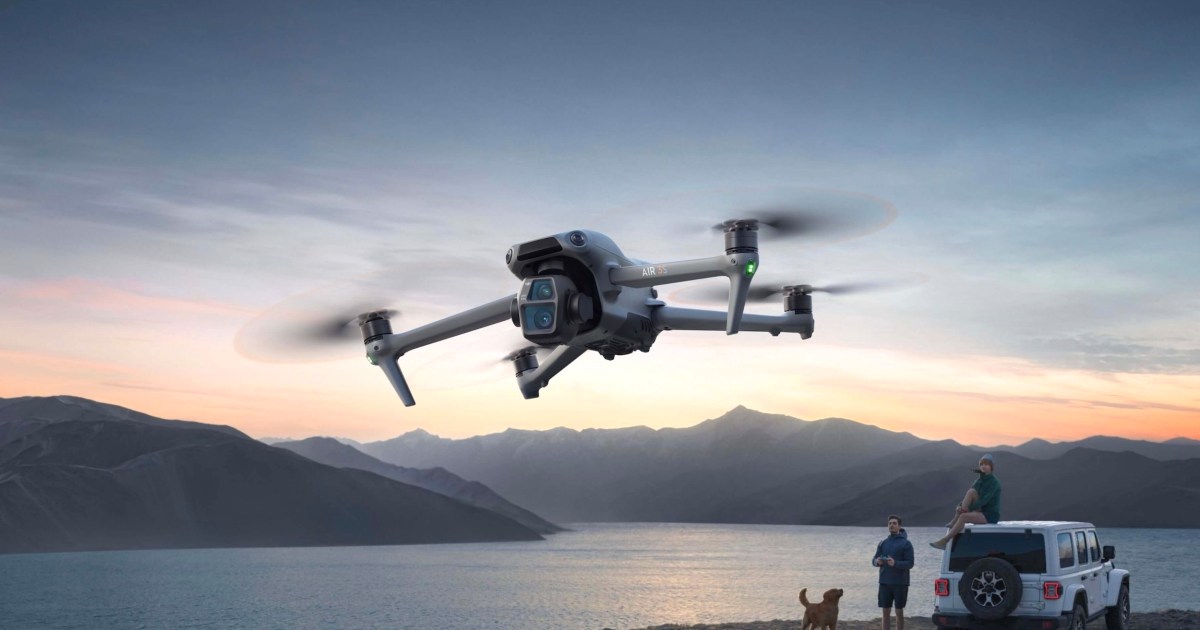Technology
This is what Chrome’s new bottom bar will look like… on Android

The latest Chrome Canary build (131.0.6772.0) showcases this revamped Chrome bottom bar look, which positions the address bar at the bottom of the screen. This change enhances user experience by making navigation easier and more intuitive.
Chrome will get a bottom bar (again) to simplify navigation
The current implementation is straightforward. Google has relocated the address bar, allowing users to access it more conveniently. While this new layout provides a fresh perspective, it does not significantly alter the existing user interface. The three-dot overflow menu remains unchanged, still organized from top to bottom. Similarly, the tab switcher retains its original format, leaving some users curious about potential future updates.
As users interact with the Chrome bottom bar look, early reports indicate some minor usability issues. However, overall functionality remains intact, allowing users to navigate without major disruptions.
Historically, Chrome has attempted various designs, including an earlier version that also featured a bottom bar. This attempt, which began in 2016, evolved into a more complex interface over time. The new Chrome bottom bar look seeks to simplify this experience without introducing additional layers of complexity.
Currently, other interface elements, such as the tab switcher, remain as they are. Observers are keen to see whether Google will refine these components as they move forward with this design.
You can already test it out, but only via the Chrome Canary app
Users can download Chrome Canary from the Google Play Store to try out the new Chrome bottom bar look. It’s essential to note that this version is experimental and may contain bugs, making it unsuitable for regular daily use. Once installed, users can activate the feature by enabling a specific flag. They should enter the following URL into their browser: chrome://flags/#android-bottom-toolbar. After enabling the flag, a simple restart of the browser is required. Users can then navigate to Settings > Address bar and select the “Bottom” option, 9to5Google reported.
Last year, Chrome for iOS adopted a similar bottom address bar, suggesting that this design shift could become permanent for Android as well. While many welcome the change, there are concerns that Google should avoid overcomplicating the browser.
Technology
Support automation firm Capacity grows with new cash and acquisitions

David Karandish has been busy.
Capacity, his support automation company, was planning a $5 million “bridge round” to help the company reach the break-even point. But TVC Capital, Toloka.vc, and the venture’s other backers had something grander in mind. So they threw in an additional $21 million for what became Capacity’s $26 million Series D.
While all this was happening, Capacity acquired three companies: enterprise search firm Lucy (which had raised $5.6 million) and two startups focused on customer service automation, Linc and Envision.
“It’s an exciting time of transformation at Capacity as we grow to help brands do more to automate interactions with customers and team members,” Karandish told TechCrunch. “We’re at an inflection point for AI and many businesses are realizing that they need a complete platform to be successful, rather than cobbling together a bunch of point solutions.”
Karandish co-founded Capacity with Chris Sims in 2017 as a part of Equity.com’s incubator program. After the $900 million exit of Answers.com (which Karandish also co-founded), Karandish says he wanted to start a business to address what he perceived as major blockers in customer service operations.
“Rising costs have placed pressure on support teams to do more with less,” Karandish said. “At the same time, consumer expectations are shifting rapidly where consumers both want self-service but are increasingly frustrated by lackluster experiences. Our goal with Capacity is to provide a great customer experience while also recognizing that escalating to a human is the right thing to do in many cases.”
Capacity connects to a company’s tech stack to answer queries and automate support tasks. The platform mines information from files, apps like Gmail, customer relationship management software, and more to build a knowledge base that Capacity’s chatbot and helpdesk tools can pull from.
Employees can ask Capacity’s chatbot questions like “What was added to the merger contract yesterday?,” or even instruct it to do things like updating the status of a sales lead. The chatbot and helpdesk can also deliver company-wide announcements, like news and event notifications. And they can be made external-facing (with filters to hide sensitive data, mind you), embedded on a company’s website to answer common customer questions.

“We view Capacity as having the ease-of-use of a tool like Zendesk with the automation chops of a ServiceNow,” Karandish said. “From an approach standpoint, we are executing a very similar playbook to Parker Conrad’s ‘compound model’ — except in our case, we’re focused on support.”
Innovations in self-service software — including AI — are making them a more attractive solution to companies than they have been in the past. For example, Cleverly.ai — which Zendesk acquired in August 2022 — finds answers to customers’ questions by creating a knowledge layer on top of applications. Meanwhile, Directly taps algorithms trained by subject-matter experts to strategically answer customer issues in a variety of different messaging channels.
Customers like self-service options. According to a Zendesk poll, 67% prefer them over interacting with customer support. But it can be difficult to get them right. A Gartner survey found that, on average, only 14% of customer service and support issues are fully resolved in self-service.
Capacity will upgrade and expand its product portfolio through its recent acquisitions.
Karandish sees Lucy’s offering, which ingests and analyzes data from enterprise apps and systems, augmenting Capacity’s existing indexing technology. Envision, meanwhile, will help Capacity customers flag unresolved chats and calls and train human agents. And Linc will bring self-service tools for retail and e-commerce to Capacity, said Karandish.
The plan is for Lucy’s co-founders, Dan Mallin, Scott Litman, and Marc Dispensa, to join Capacity to help lead products and teams integration. Envision CEO Rodney Kuhn will oversee contact center solutions at Capacity, and Linc founder and CEO Fang Cheng will lead Capacity’s e-commerce efforts.
To date, Capacity has acquired eight companies — the other five being Textel, LumenVox, Denim Social, SmartAction, and Cereproc — and raised more than $89 million.
Karandish said that the newest tranche will be put toward growing Capacity’s headcount to 200 people by the end of the year as the Saint Louis-based company “heads toward profitability.” Capacity’s customer base now stands at over 2,500 brands, he added, while its annual recurring revenue is nearly $50 million.
“Our growth strategy reflects what our customers are asking for: an all-in-one AI platform that delivers across all communication channels,” he added. “We’ve identified 24 steps of the customer experience that are ripe for support automation … Each acquisition adds specific tech and talent to help Capacity become a leading provider of AI-powered solutions for customer and employee experience.”
Technology
The FCC is looking into the impact of broadband data caps and why they still exist

The Federal Communications Commission is officially looking into broadband data caps and their impact on consumers. On Tuesday, the FCC approved a notice of inquiry to examine whether data caps harm consumers and competition, as well as why data caps persist “despite increased broadband needs” and the “technical ability to offer unlimited data plans,” as spotted earlier by Engadget.
Many internet plans come with a data cap that limits how much bandwidth you can use each month. If you go over the data cap, internet service providers will typically charge an extra fee or slow down your service. The FCC first started inviting consumers to comment on broadband data caps last June, hundreds of which you can now read on the agency’s website.
You can still share your experience with broadband data caps with the FCC through this form, which will ask for details about the name of your ISP, usage limits, and any challenges you’ve encountered due to the cap.
“For most people in the United States, rationing their internet usage would be unthinkable and impractical,” FCC Chairwoman Jessica Rosenworcel said in the press release. “Restricting consumers’ data can cut off small businesses from their customers, slap fees on low-income families, and prevent people with disabilities from using the tools they rely on to communicate.”
Technology
AI maturity: An organizational guide for AI-powered transformation

As the transformative power of Generative AI reaches new heights, the technology is reshaping the way nearly every organization around the world works, collaborates and innovates.
However, adoption and progress is uneven, with two cohorts emerging: those organizations that stalled in adopting AI tools, versus those who making progress towards realizing the opportunity. According to a recent study from BCG, only 10% of organizations are scaling AI across one or more enterprise functions, while 40% of organization have taken no action. The BCG study notes that the benefits are clear, as those organizations who are further along in the adoption of AI are observing 2.6x increases in revenue growth and 38% in EBIT growth across three years, as well as substantive increases in market share and customer satisfaction.
There are a range of ways that AI can be applied to simplify and streamline parts of the day to day working process, as well as supporting creative content creation and complex problem solving. However, to truly harness these new capabilities, organizations will need to rethink traditional ways of working and adapt to new paradigms to achieve the business impact noted above.
Through our discussions with leading enterprise customers, numerous analyst briefings and our own independent research, we have found that organizations exhibit a common set of characteristics as they mature their understanding and adoption of AI. Through understanding the indicators, incubators, and inhibitors, organizations can accelerate their path towards realizing the benefits of AI. Let’s walk through these phases to help supercharge the ways organizations leverage AI. Known as the nascent phase where organizations are beginning to understand what AI is and how it can be applied within their context, the exploration phase is entrepreneurial and opportunistic.
For every organization, building a strong foundation with AI emphasizes educating the team with the basics of AI and machine learning, being strategic with the existing By grounding AI initiatives in familiar governance practices, organizations will have the opportunity to create a solid foundation for responsible AI deployment while facilitating smoother transitions and fostering trust among stakeholders. It means you’ll also be able to identify gaps or necessary adjustments in policies to better accommodate AI technologies as they evolve.
At this stage, organizations may begin experimenting with AI technologies to upskill their teams and put knowledge into action. It’s a good idea to run pilot projects and proof-of-concept initiatives, encouraging targeted use of AI to address specific opportunities. This user testing will also help teams get first-hand experience of working with AI aligned with their business’ policies and governance in mind. Some processes to consider trialing include:
1. Upskill AI “champions” with critical knowledge – these are the key employees that will be the core AI team, providing support across departments and ensuring business-wide alignment
2. Fund targeted AI applications to address specific challenges or opportunities – by being selective and prioritizing key projects, you can scale up AI implementation and ensure it is fit for purpose.
3. Either set up or brief the governance team to identify risk, ensure data integrity, and foster accountability throughout AI projects. Communication is key in this phase so ensure teams and pilot project groups are aligned and led with a central vision or set of objectives. This might include streamlining client communications across the organization so there is full transparency of the developing changes and inclusion of AI to the business, while highlighting how it will benefit the business and the services provided.
The innovation phase is arguably the most exciting one. This is when the groundwork and testing is put to good use. Here, organizations may consider establishing new AI roles and reskilling team members, upgrading the existing infrastructure to support long-term adoption of AI, re-engineering the work process and continuously monitoring and updating policies as new processes are officially brought online.
This phase will also demonstrate the immense benefits and learning development opportunities that come with AI adoption. A comprehensive reskilling program is essential to empower existing employees with the knowledge and skills needed to work effectively with AI technologies.
It is also well worth investing in some high-performance computing resources, cloud computing platforms, and advanced data storage solutions that can handle the increased processing demands of AI workloads. This next phase is about fully integrating AI into decision-making and operational processes to unlock new opportunities, drive innovation, and maintain a strong competitive position in the market. This is where all that has been learned through the previous phases is formally embedded into day-to-day ways of working.
Similar to the innovation phase of reskilling employees, here, organizations should make sure that their employees are fully equipped with the technology and leadership skills that are necessary to leverage AI technologies. This will be a case of making sure that all employees are skilled to adapt to the new ways of working by benchmarking skills, identifying competency gaps, and implementing training programs to address them accordingly.
Organizations should also evaluate the consolidation or decommissioning of legacy infrastructure and tools, scale work processes across all business functions and units, and empower the governance team to actively monitor progress and update policies.
Overall, as your organization begins adopting AI business-wide, it’s important to remember that it’s not just about using AI to make things faster and more efficient, but about leading with empathy and understanding. If we as leaders focus on emotional intelligence we create working environments where both people and technology can thrive. We list the best free cloud storage.
This article was produced as part of TechRadarPro's Expert Insights channel where we feature the best and brightest minds in the technology industry today. The views expressed here are those of the author and are not necessarily those of TechRadarPro or Future plc. If you are interested in contributing find out more here: https://www.techradar.com/news/submit-your-story-to-techradar-pro

Phase 1: Exploration
IT infrastructure and data, focusing on the forward momentum in a responsible way and evaluating the existing policies. This approach ensures that the integration of AI aligns with your established protocols for data security, privacy and ethical standards, minimizing risks and maintaining regulatory compliance.
Phase 2: Experimentation
Phase 3: Innovation
Phase 4: Realization
Science & Environment
Bullish sentiment and broadening rally in markets

Traders work on the floor of the New York Stock Exchange on April 5, 2024.
Spencer Platt | Getty Images News | Getty Images
This report is from today’s CNBC Daily Open, our international markets newsletter. CNBC Daily Open brings investors up to speed on everything they need to know, no matter where they are. Like what you see? You can subscribe here.
What you need to know today
Breather from rally
U.S. markets fell Tuesday, weighed down by a drop in semiconductor stocks and a 8.1% slide in UnitedHealth. Asia-Pacific stocks were mostly lower Wednesday. Asian chip stocks, like Tokyo Electron and Taiwan Semiconductor Manufacturing Company, retreated on news of ASML’s disappointing forecast and reports of the U.S. possibly imposing export controls on AI chips.
ASML slumps
Shares of semiconductor equipment manufacturer ASML plunged 16% on a downbeat earnings report. For 2025, the Netherlands-based company thinks net sales will come in at the lower half of its previous projection. ASML missed expectations on net bookings by 3 billion euros for the September quarter, though net sales beat expectations.
Better than ChatGPT
Alibaba updated its artificial-intelligence translation tool, based on a model called Marco MT, on Wednesday. The Chinese e-commerce giant said its product performs better than those by Google and DeepL, according to an assessment by benchmarking tool FLoRes. Fifteen languages are supported by Alibaba’s AI-powered translation tool.
Banks beat expectations
Goldman Sachs, Bank of America and Citigroup beat earnings and revenue estimates for their third quarter. Goldman was the standout performer: Its profit jumped 45% from a year earlier. Year on year, Bank of America experienced a 12% drop in net income and Citigroup’s net income fell 8.6%.
[PRO] Repositioning for slower rate cuts
September’s strong jobs report and higher-than-expected inflation reading mean that the U.S. Federal Reserve is unlikely to repeat its jumbo 50-basis-point rate cut at its November meeting. Here’s how strategists are repositioning in view of changing rate cut expectations.
The bottom line
Despite markets falling Tuesday, there’s still plenty to like about their current state.
Weighed down by ASML’s 16% dive and a report by Bloomberg on potential AI-chip export controls, semiconductor stocks like Nvidia and AMD fell 4.7% and 5.2% respectively. That gave the VanEck Semiconductor ETF its worst day since Sept. 3. As a result, the tech-heavy Nasdaq Composite lost 1.01%.
The Dow Jones Industrial Average, which just yesterday was basking in its accomplishment at closing above the 43,000 level for the first time, fell 0.75% to dip into the 42,000 territory again. UnitedHealth’s 8.1% drop dragged down the Dow.
Last, the S&P 500 retreated 0.76%.
Still, investors are the most bullish in four years, according to the October BofA Global Fund Manager Survey. They’re also optimistic about the economy: 74% investors believe the U.S. will avoid a recession.
Anticipation of more rate cuts by the U.S. Federal Reserve and hopes that Beijing will unleash more stimulus to boost its economy are driving up investor sentiment, according to Michael Hartnett, an investment strategist at BofA.
Indeed, San Francisco Fed President Mary Daly, who’s a member of the Federal Open Market Committee this year, noted that the central bank is “a long way from where [rates are] likely to settle.” That means “the decisions that are really in front of us are ones about how quickly to adjust towards that level” – not whether to keep rates high in light of how strong recent economic data has been.
Another positive sign for markets is how the S&P and Dow hit all-time highs on Monday, but the Nasdaq was still a few percentage points away from its peak. “This subtle divergence is technical evidence that the market has been moving away from the Magnificent Seven mega-caps,” wrote Piper Sandler’s chief market technician Craig Johnson.
– CNBC’s Jeff Cox, Samantha Subin, Yun Li, Lisa Kailai Han and Alex Harring contributed to this story.
Technology
DJI’s new Air 3S has a whopping 42GB of built-in storage


DJI has officially unveiled the Air 3S, the company’s first new flying machine since the Neo beginner drone that launched in September.
The Air 3S builds on the success of the Air 3 and offers travelers a great way to capture aerial photos and footage from wherever their adventures take them. DJI’s newest quadcopter comes with a 1-inch-CMOS, 50-megapixel sensor, with a 24mm lens capable of 4K/60fps HDR and 4K/120fps video. It also features a 48-megapixel, 70mm medium telephoto lens with a 3x optical zoom.
The Air 3S comes with omnidirectional obstacle sensing via six vision sensors, and is the first DJI drone to feature forward-facing LiDAR. It also has new nightscape obstacle sensing capability, enabling peace of mind when sending your quadcopter skyward in darker conditions.
The new foldable flying machine comes with DJI’s ActiveTrack 360-degree flight mode ensuring that the subject remains in the frame, and also introduces a new Subject Focusing feature that keeps the subject in sharp focus during manual flight or when the subject moves off-center. DJI says the feature allows the pilot to concentrate on the creative aspects of perfecting a shot, such as composition and camera movement.
You’ll get a decent 45 minutes of flight time from a single charge of the swappable Air 3S battery, and any content you capture will go straight to the 42GB of built-in storage — the most found on any of DJI’s consumer drones.
“The DJI Air 3S takes our Air Series to new heights by offering professional features like dual primary cameras and omnidirectional obstacle sensing while retaining its light weight of just 724 grams (1.6 pounds) for boundless freedom and flexibility,” DJI executive Ferdinand Wolf said in a release. “The Air 3S is the perfect all-rounder for travel photography, capturing all your special moments during vacation while also providing safety and security if operating at night.”
The DJI Air 3S is available now via the company’s website and starts at $1,099 the quadcopter only, while the Air 3S Fly More Combo, which offers extra accessories, costs $1,399. There’s also the Air 3S Fly More Combo with accessories and the DJI RC 2 controller, which will set you back $1,599.
Technology
Pixel 9 series gets an automatic underwater photography mode
Pixel phones stand out in multiple sections, including camera quality. Google wants to make it easier for anyone to take great photos with their smartphones in any condition. The company’s next step is to boost underwater photography with an automatic underwater mode that works with any waterproof case on the Pixel 9 series.
Underwater photography can yield eye-catching results in the right place. Flagship smartphones are becoming more and more water-resistant thanks to advanced IP certifications, which makes the task easier (at least in fresh water). If the IP rating doesn’t inspire enough confidence to dunk your phone in water, there are also dedicated waterproof cases. Currently, no phone brand is actively pushing this type of photography, so Google seems to have spotted a niche where its phones can excel.
Android 15 brought an automatic underwater photography mode to the Pixel 9 series
As spotted by Android Authority, the first Android 15 stable update brings a new automatic underwater photography mode to the Pixel 9, Pixel 9 Pro, and Pixel 9 Pro XL. Google already offers a Dive Case Connector app that makes it easy to use compatible Pixel phones with Kraken Sports waterproof cases. The app even enables modes like Night Sight and Portrait for taking stunning underwater photos. However, it is a hardware-dependent app.
The new underwater photography mode of the Pixel 9 series offers a similar experience, but it works with any waterproof case you attach. Now, the Pixel Camera app will tweak specific parameters after detecting that you’ve submerged the device underwater. Tweaks to the image processing algorithm will ensure that the camera produces high-quality photos under such conditions. For example, the Pixel Camera will correct color distortions resulting from being underwater.
Before Google, Sony tried to promote underwater photography as a key selling point for its Xperia phones. However, the company promoted it without the use of a case. This led to complaints from users whose devices were damaged after not following the instructions correctly. For example, there were people who submerged the phone in saline water. So, Sony stopped promoting its phones as being suitable for taking photos and videos underwater.
![]()
No details on the possible arrival of the mode to older Pixel devices
Google’s approach is different, as it requires a waterproof case to take advantage of the “underwater” mode. Only time will tell if the brand manages to start a trend in this type of photography. It would not be the first time a company has managed to do so, as happened with Astrophotography in the recent past. It is not yet known if the automatic underwater photography mode will come to older Pixel models in the future.
-

 Science & Environment4 weeks ago
Science & Environment4 weeks agoHyperelastic gel is one of the stretchiest materials known to science
-

 Science & Environment4 weeks ago
Science & Environment4 weeks agoHow to unsnarl a tangle of threads, according to physics
-

 Technology4 weeks ago
Technology4 weeks agoWould-be reality TV contestants ‘not looking real’
-

 Science & Environment4 weeks ago
Science & Environment4 weeks agoMaxwell’s demon charges quantum batteries inside of a quantum computer
-

 Science & Environment4 weeks ago
Science & Environment4 weeks ago‘Running of the bulls’ festival crowds move like charged particles
-

 Technology3 weeks ago
Technology3 weeks agoIs sharing your smartphone PIN part of a healthy relationship?
-

 Science & Environment4 weeks ago
Science & Environment4 weeks agoLiquid crystals could improve quantum communication devices
-

 Womens Workouts3 weeks ago
Womens Workouts3 weeks ago3 Day Full Body Women’s Dumbbell Only Workout
-

 Science & Environment4 weeks ago
Science & Environment4 weeks agoQuantum ‘supersolid’ matter stirred using magnets
-

 Science & Environment3 weeks ago
Science & Environment3 weeks agoX-rays reveal half-billion-year-old insect ancestor
-

 Science & Environment4 weeks ago
Science & Environment4 weeks agoWhy this is a golden age for life to thrive across the universe
-

 Science & Environment4 weeks ago
Science & Environment4 weeks agoSunlight-trapping device can generate temperatures over 1000°C
-

 Science & Environment4 weeks ago
Science & Environment4 weeks agoNerve fibres in the brain could generate quantum entanglement
-

 Science & Environment4 weeks ago
Science & Environment4 weeks agoQuantum forces used to automatically assemble tiny device
-

 Science & Environment4 weeks ago
Science & Environment4 weeks agoITER: Is the world’s biggest fusion experiment dead after new delay to 2035?
-

 Science & Environment4 weeks ago
Science & Environment4 weeks agoHow to wrap your mind around the real multiverse
-

 Science & Environment4 weeks ago
Science & Environment4 weeks agoA slight curve helps rocks make the biggest splash
-
News4 weeks ago
the pick of new debut fiction
-

 News3 weeks ago
News3 weeks agoOur millionaire neighbour blocks us from using public footpath & screams at us in street.. it’s like living in a WARZONE – WordupNews
-

 Science & Environment4 weeks ago
Science & Environment4 weeks agoLaser helps turn an electron into a coil of mass and charge
-

 Science & Environment4 weeks ago
Science & Environment4 weeks agoTime travel sci-fi novel is a rip-roaringly good thought experiment
-

 Science & Environment4 weeks ago
Science & Environment4 weeks agoPhysicists are grappling with their own reproducibility crisis
-

 Science & Environment4 weeks ago
Science & Environment4 weeks agoNuclear fusion experiment overcomes two key operating hurdles
-

 News1 month ago
News1 month ago▶️ Hamas in the West Bank: Rising Support and Deadly Attacks You Might Not Know About
-

 News4 weeks ago
News4 weeks ago▶️ Media Bias: How They Spin Attack on Hezbollah and Ignore the Reality
-

 News4 weeks ago
News4 weeks agoYou’re a Hypocrite, And So Am I
-
Business3 weeks ago
Eurosceptic Andrej Babiš eyes return to power in Czech Republic
-

 Sport4 weeks ago
Sport4 weeks agoJoshua vs Dubois: Chris Eubank Jr says ‘AJ’ could beat Tyson Fury and any other heavyweight in the world
-

 Science & Environment4 weeks ago
Science & Environment4 weeks agoA new kind of experiment at the Large Hadron Collider could unravel quantum reality
-

 Science & Environment4 weeks ago
Science & Environment4 weeks agoCaroline Ellison aims to duck prison sentence for role in FTX collapse
-

 Science & Environment4 weeks ago
Science & Environment4 weeks agoRethinking space and time could let us do away with dark matter
-

 News4 weeks ago
News4 weeks agoNew investigation ordered into ‘doorstep murder’ of Alistair Wilson
-

 Technology3 weeks ago
Technology3 weeks agoQuantum computers may work better when they ignore causality
-

 Sport2 weeks ago
Sport2 weeks agoWatch UFC star deliver ‘one of the most brutal knockouts ever’ that left opponent laid spark out on the canvas
-

 Technology3 weeks ago
Technology3 weeks agoRobo-tuna reveals how foldable fins help the speedy fish manoeuvre
-

 Technology3 weeks ago
Technology3 weeks agoWhy Machines Learn: A clever primer makes sense of what makes AI possible
-
Business3 weeks ago
Should London’s tax exiles head for Spain, Italy . . . or Wales?
-

 MMA3 weeks ago
MMA3 weeks agoConor McGregor challenges ‘woeful’ Belal Muhammad, tells Ilia Topuria it’s ‘on sight’
-

 Football3 weeks ago
Football3 weeks agoFootball Focus: Martin Keown on Liverpool’s Alisson Becker
-

 Health & fitness4 weeks ago
Health & fitness4 weeks agoThe secret to a six pack – and how to keep your washboard abs in 2022
-

 Science & Environment4 weeks ago
Science & Environment4 weeks agoA tale of two mysteries: ghostly neutrinos and the proton decay puzzle
-
News4 weeks ago
The Project Censored Newsletter – May 2024
-

 Technology3 weeks ago
Technology3 weeks ago‘From a toaster to a server’: UK startup promises 5x ‘speed up without changing a line of code’ as it plans to take on Nvidia, AMD in the generative AI battlefield
-

 Technology2 weeks ago
Technology2 weeks agoMicrophone made of atom-thick graphene could be used in smartphones
-

 News4 weeks ago
News4 weeks agoIsrael strikes Lebanese targets as Hizbollah chief warns of ‘red lines’ crossed
-

 Science & Environment4 weeks ago
Science & Environment4 weeks agoFuture of fusion: How the UK’s JET reactor paved the way for ITER
-

 Technology2 weeks ago
Technology2 weeks agoUniversity examiners fail to spot ChatGPT answers in real-world test
-

 Science & Environment4 weeks ago
Science & Environment4 weeks agoPhysicists have worked out how to melt any material
-

 Technology4 weeks ago
Technology4 weeks agoThe ‘superfood’ taking over fields in northern India
-

 Science & Environment4 weeks ago
Science & Environment4 weeks agoUK spurns European invitation to join ITER nuclear fusion project
-

 CryptoCurrency4 weeks ago
CryptoCurrency4 weeks agoCardano founder to meet Argentina president Javier Milei
-

 TV3 weeks ago
TV3 weeks agoCNN TÜRK – 🔴 Canlı Yayın ᴴᴰ – Canlı TV izle
-

 News3 weeks ago
News3 weeks agoWhy Is Everyone Excited About These Smart Insoles?
-

 Technology3 weeks ago
Technology3 weeks agoGet ready for Meta Connect
-
Business2 weeks ago
Ukraine faces its darkest hour
-

 Business2 weeks ago
Business2 weeks agoWhen to tip and when not to tip
-
Politics3 weeks ago
Robert Jenrick vows to cut aid to countries that do not take back refused asylum seekers | Robert Jenrick
-

 Entertainment1 week ago
Entertainment1 week agoChristopher Ciccone, artist and Madonna’s younger brother, dies at 63
-

 Sport4 weeks ago
Sport4 weeks agoUFC Edmonton fight card revealed, including Brandon Moreno vs. Amir Albazi headliner
-

 Science & Environment4 weeks ago
Science & Environment4 weeks agoBeing in two places at once could make a quantum battery charge faster
-

 News1 month ago
News1 month agoHow FedEx CEO Raj Subramaniam Is Adapting to a Post-Pandemic Economy
-

 Science & Environment4 weeks ago
Science & Environment4 weeks agoWhy we need to invoke philosophy to judge bizarre concepts in science
-
Business4 weeks ago
Thames Water seeks extension on debt terms to avoid renationalisation
-
Politics4 weeks ago
‘Appalling’ rows over Sue Gray must stop, senior ministers say | Sue Gray
-
Politics4 weeks ago
UK consumer confidence falls sharply amid fears of ‘painful’ budget | Economics
-

 Science & Environment3 weeks ago
Science & Environment3 weeks agoMeet the world's first female male model | 7.30
-

 Womens Workouts3 weeks ago
Womens Workouts3 weeks ago3 Day Full Body Toning Workout for Women
-

 Health & fitness3 weeks ago
Health & fitness3 weeks agoThe 7 lifestyle habits you can stop now for a slimmer face by next week
-

 Politics4 weeks ago
Politics4 weeks agoTrump says he will meet with Indian Prime Minister Narendra Modi next week
-

 CryptoCurrency4 weeks ago
CryptoCurrency4 weeks agoEthereum is a 'contrarian bet' into 2025, says Bitwise exec
-

 Health & fitness4 weeks ago
Health & fitness4 weeks agoThe maps that could hold the secret to curing cancer
-

 CryptoCurrency4 weeks ago
CryptoCurrency4 weeks agoDecentraland X account hacked, phishing scam targets MANA airdrop
-

 CryptoCurrency4 weeks ago
CryptoCurrency4 weeks agoBitcoin miners steamrolled after electricity thefts, exchange ‘closure’ scam: Asia Express
-

 CryptoCurrency4 weeks ago
CryptoCurrency4 weeks agoDZ Bank partners with Boerse Stuttgart for crypto trading
-

 CryptoCurrency4 weeks ago
CryptoCurrency4 weeks agoLow users, sex predators kill Korean metaverses, 3AC sues Terra: Asia Express
-

 CryptoCurrency4 weeks ago
CryptoCurrency4 weeks agoBlockdaemon mulls 2026 IPO: Report
-

 MMA4 weeks ago
MMA4 weeks agoRankings Show: Is Umar Nurmagomedov a lock to become UFC champion?
-

 Womens Workouts4 weeks ago
Womens Workouts4 weeks agoBest Exercises if You Want to Build a Great Physique
-

 Womens Workouts4 weeks ago
Womens Workouts4 weeks agoEverything a Beginner Needs to Know About Squatting
-

 News3 weeks ago
News3 weeks agoFour dead & 18 injured in horror mass shooting with victims ‘caught in crossfire’ as cops hunt multiple gunmen
-

 Servers computers3 weeks ago
Servers computers3 weeks agoWhat are the benefits of Blade servers compared to rack servers?
-
Business2 weeks ago
DoJ accuses Donald Trump of ‘private criminal effort’ to overturn 2020 election
-

 Technology2 weeks ago
Technology2 weeks agoUkraine is using AI to manage the removal of Russian landmines
-

 News4 weeks ago
News4 weeks agoChurch same-sex split affecting bishop appointments
-

 Technology4 weeks ago
Technology4 weeks agoiPhone 15 Pro Max Camera Review: Depth and Reach
-

 News4 weeks ago
News4 weeks agoBrian Tyree Henry on voicing young Megatron, his love for villain roles
-
Business4 weeks ago
JPMorgan in talks to take over Apple credit card from Goldman Sachs
-

 Science & Environment4 weeks ago
Science & Environment4 weeks agoQuantum time travel: The experiment to ‘send a particle into the past’
-

 Science & Environment4 weeks ago
Science & Environment4 weeks agoTiny magnet could help measure gravity on the quantum scale
-

 CryptoCurrency4 weeks ago
CryptoCurrency4 weeks agoDorsey’s ‘marketplace of algorithms’ could fix social media… so why hasn’t it?
-

 CryptoCurrency4 weeks ago
CryptoCurrency4 weeks agoBitcoin bulls target $64K BTC price hurdle as US stocks eye new record
-

 News4 weeks ago
News4 weeks agoBrian Tyree Henry on voicing young Megatron, his love for villain roles
-

 CryptoCurrency4 weeks ago
CryptoCurrency4 weeks agoCoinbase’s cbBTC surges to third-largest wrapped BTC token in just one week
-

 Science & Environment3 weeks ago
Science & Environment3 weeks agoCNN TÜRK – 🔴 Canlı Yayın ᴴᴰ – Canlı TV izle
-

 News3 weeks ago
News3 weeks agoShocking ‘kidnap’ sees man, 87, bundled into car, blindfolded & thrown onto dark road as two arrested
-

 Travel3 weeks ago
Travel3 weeks agoDelta signs codeshare agreement with SAS
-

 News3 weeks ago
News3 weeks agoUS Newspapers Diluting Democratic Discourse with Political Bias
-

 Technology3 weeks ago
Technology3 weeks agoThe best robot vacuum cleaners of 2024
-

 Science & Environment4 weeks ago
Science & Environment4 weeks agoHow one theory ties together everything we know about the universe
-

 CryptoCurrency4 weeks ago
CryptoCurrency4 weeks agoLouisiana takes first crypto payment over Bitcoin Lightning

You must be logged in to post a comment Login